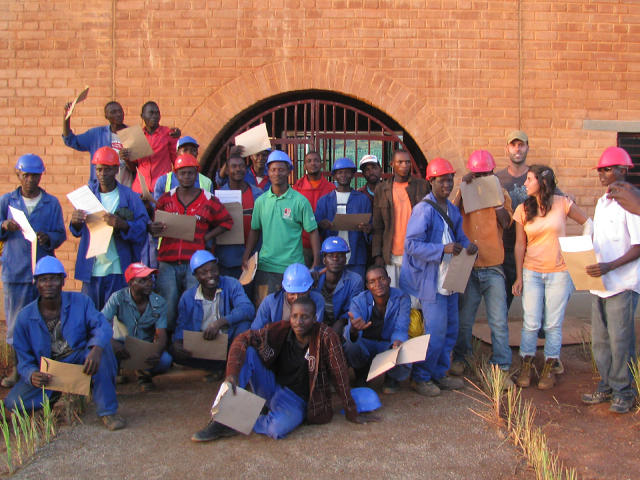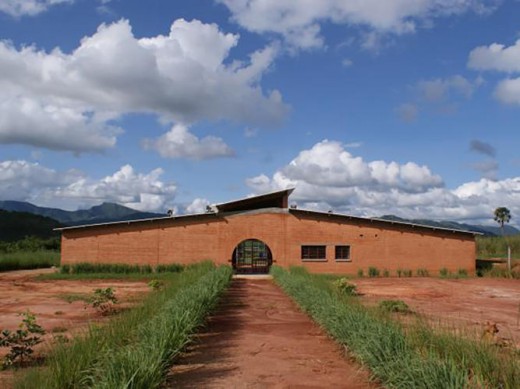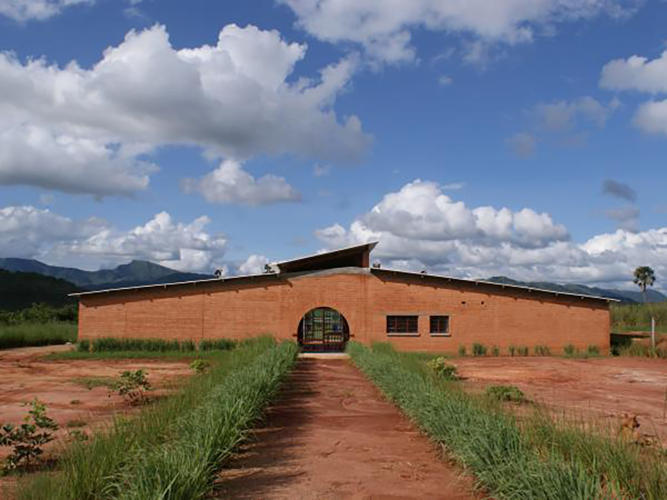Architecture For Humanity Shuts Down
The nonprofit that sought architectural solutions for humanitarian problems is closing after more than 15 years.
Architecture for Humanity, the San Francisco-based nonprofit that brought professional architecture and design services to communities in need around the world, has closed.
The organization had been struggling for about a year. It had trouble finding funding and interest once the novelty of its approach had waned, according to the San Francisco Chronicle. The founders, Kate Stohr and Cameron Sinclair, left the organization in 2013.
Sinclair and Stohr founded the organization in 1999 because they wanted to help provide shelters for refugees returning from Kosovo after years of bloody conflict in the region. They hosted a series of open design competitions for transitional shelters. By the mid-2000s, Architecture for Humanity had more than 60 chapters around the world.

In 2008, the organization received a National Design Award from the Cooper Hewitt, National Design Museum “for its commitment to bringing sustainable architecture to global communities in need,” including the Gulf Coast after Hurricane Katrina’s devastation. Over a period of 15 years, the organization worked in 28 countries around the world and completed more than 245 projects. Its pro-bono work included building schools, sports facilities, and disaster relief, including reconstruction in Haiti after the 2010 earthquake and in Sri Lanka after the Indian Ocean Tsunami.
“The travesty isn’t that the organization went over budget serving communities around the world,” Margie O’Driscoll, former executive director of the San Francisco chapter of the American Institute of Architects, told the San Francisco Chronicle’s John King. “It is that humanitarian design isn’t considered a fundamental right. And that today, in San Francisco, it is easier to find funding for an app than to fund an organization which transforms lives in places most Americans don’t know exists.”
The early history of the organization and its driving philosophy is outlined in the 2006 book Design Like You Give A Damn: Architectural Responses to Humanitarian Crises.
[Via San Francisco Chronicle]
Architecture for Humanity, the San Francisco-based nonprofit that brought professional architecture and design services to communities in need around the world, has closed.
The organization had been struggling for about a year. It had trouble finding funding and interest once the novelty of its approach had waned, according to the San Francisco Chronicle. The founders, Kate Stohr and Cameron Sinclair, left the organization in 2013.
Sinclair and Stohr founded the organization in 1999 because they wanted to help provide shelters for refugees returning from Kosovo after years of bloody conflict in the region. They hosted a series of open design competitions for transitional shelters. By the mid-2000s, Architecture for Humanity had more than 60 chapters around the world.

In 2008, the organization received a National Design Award from the Cooper Hewitt, National Design Museum “for its commitment to bringing sustainable architecture to global communities in need,” including the Gulf Coast after Hurricane Katrina’s devastation. Over a period of 15 years, the organization worked in 28 countries around the world and completed more than 245 projects. Its pro-bono work included building schools, sports facilities, and disaster relief, including reconstruction in Haiti after the 2010 earthquake and in Sri Lanka after the Indian Ocean Tsunami.
“The travesty isn’t that the organization went over budget serving communities around the world,” Margie O’Driscoll, former executive director of the San Francisco chapter of the American Institute of Architects, told the San Francisco Chronicle’s John King. “It is that humanitarian design isn’t considered a fundamental right. And that today, in San Francisco, it is easier to find funding for an app than to fund an organization which transforms lives in places most Americans don’t know exists.”
The early history of the organization and its driving philosophy is outlined in the 2006 book Design Like You Give A Damn: Architectural Responses to Humanitarian Crises.
[Via San Francisco Chronicle]
[All photos: via Architecture for Humanity]
(106)











